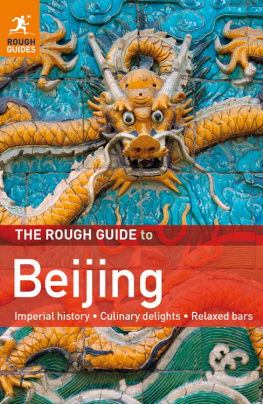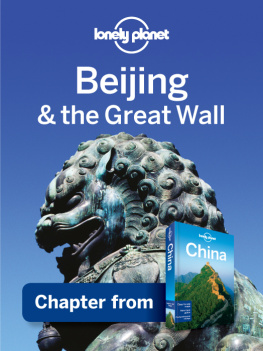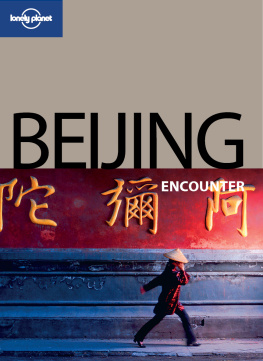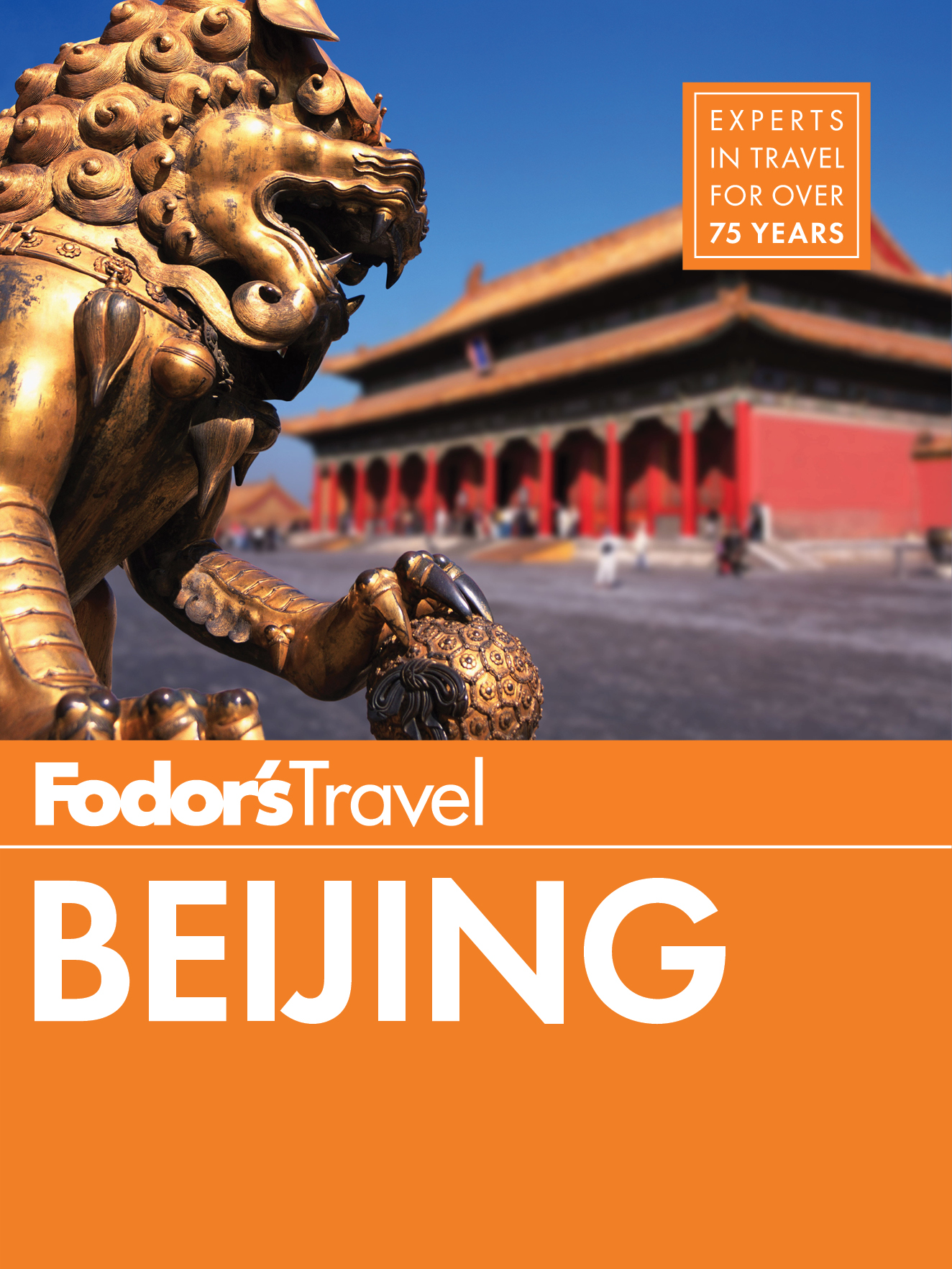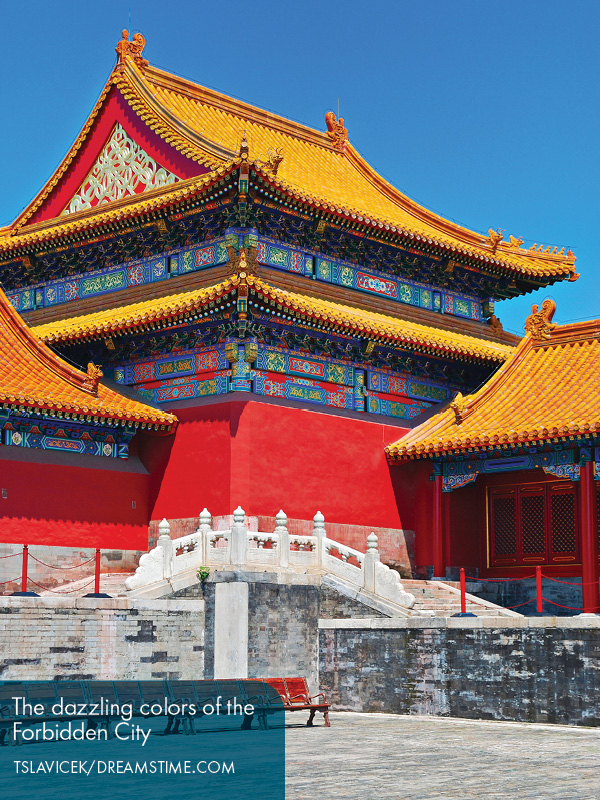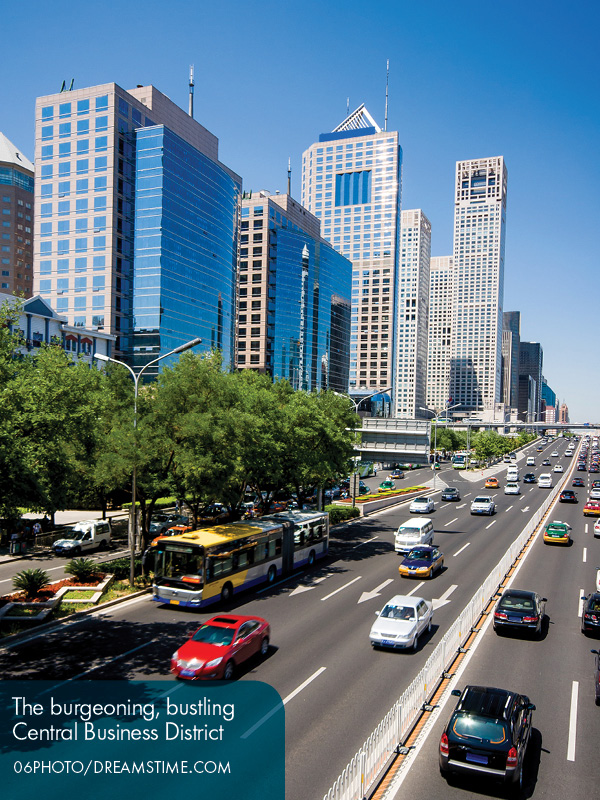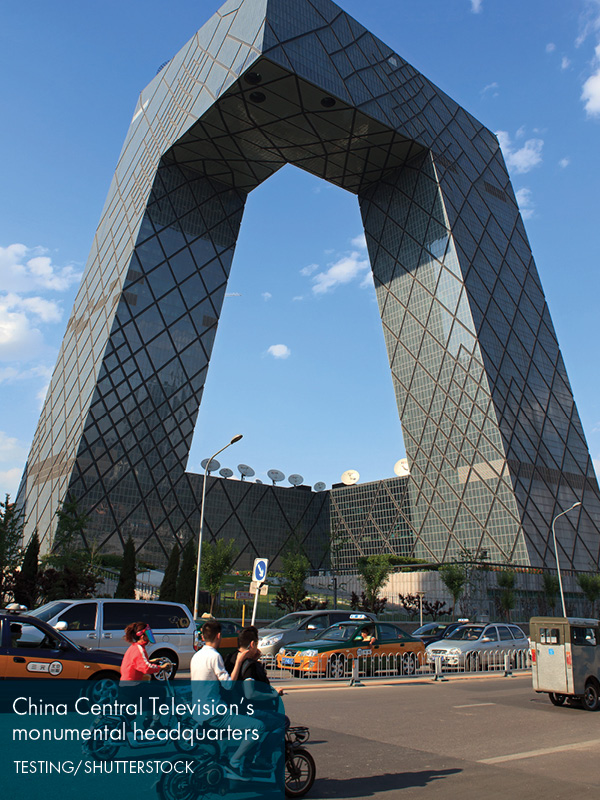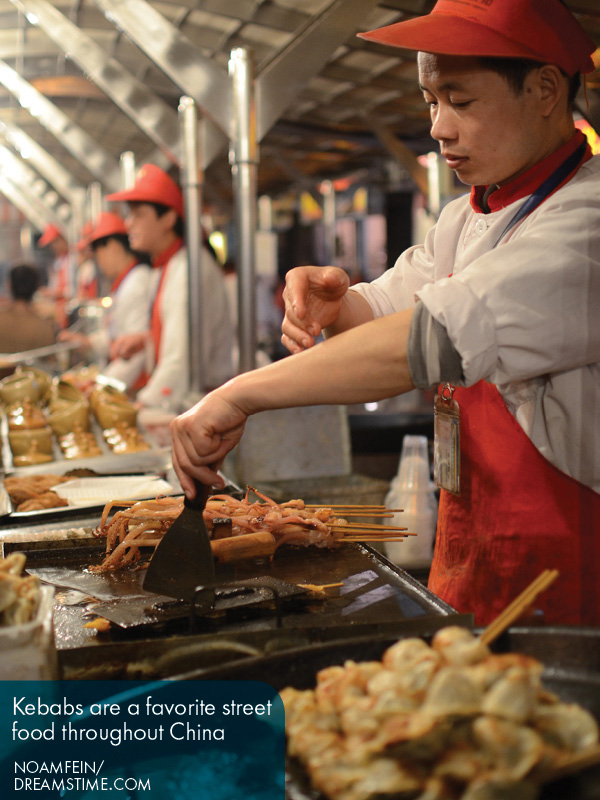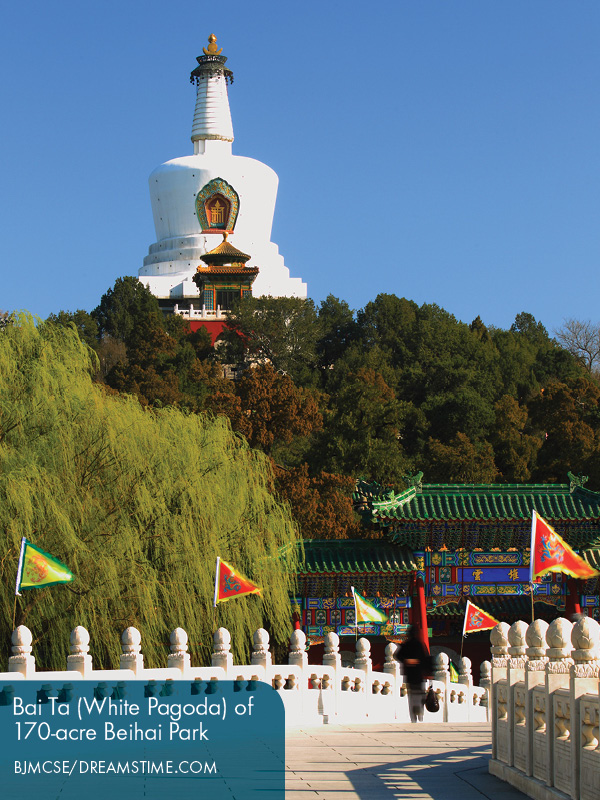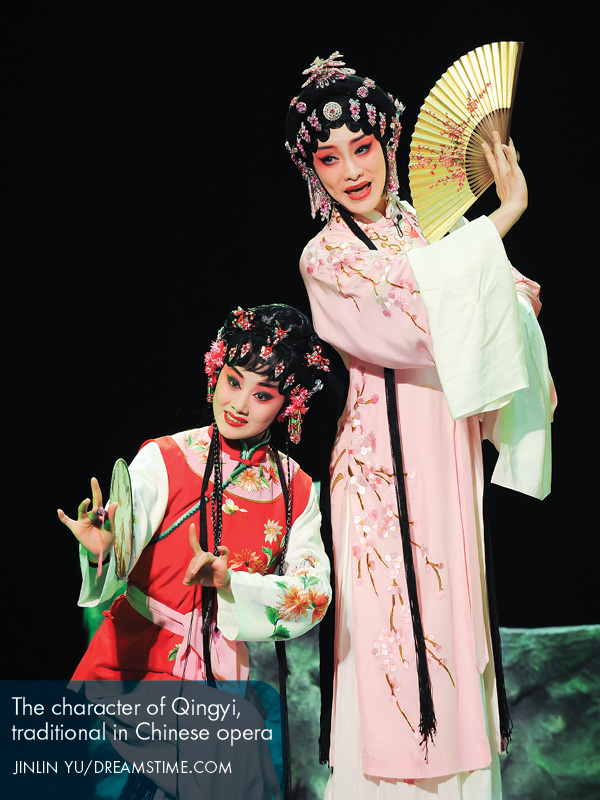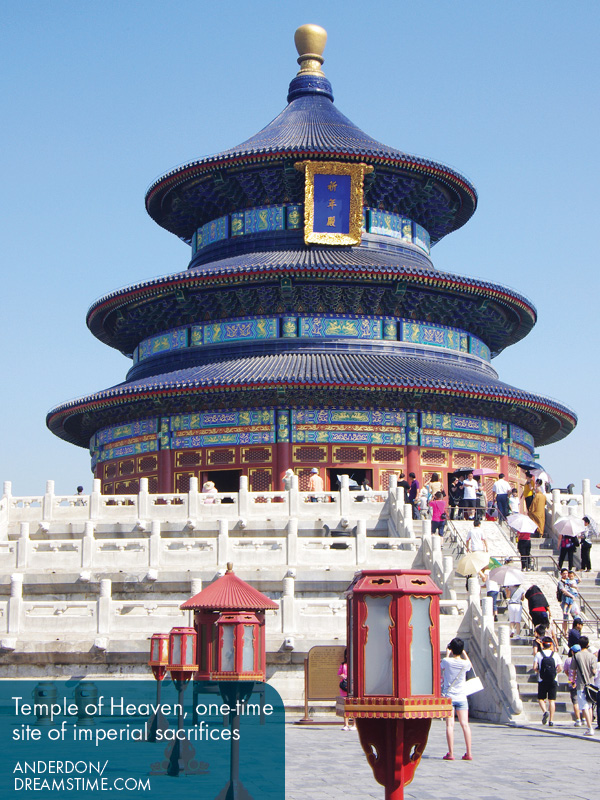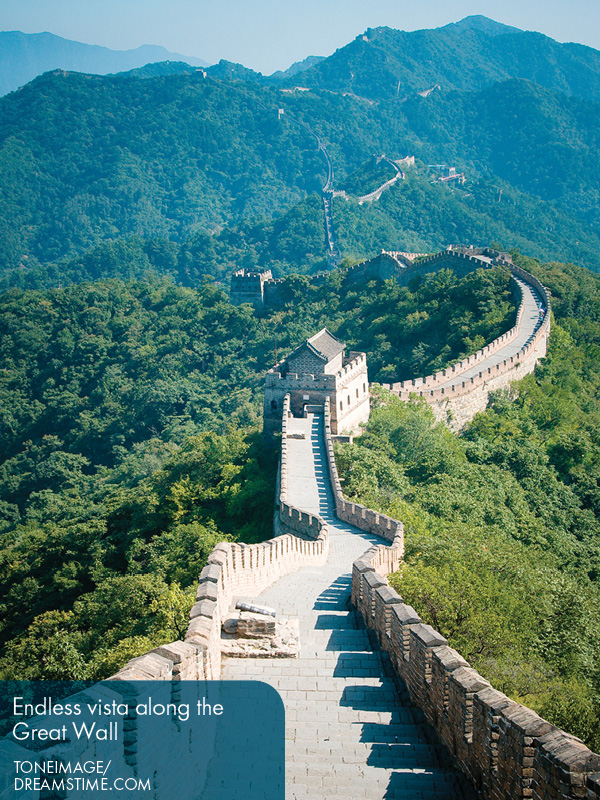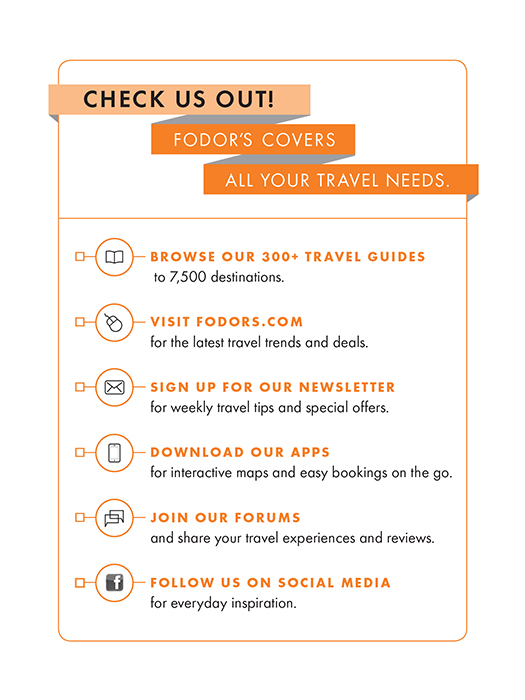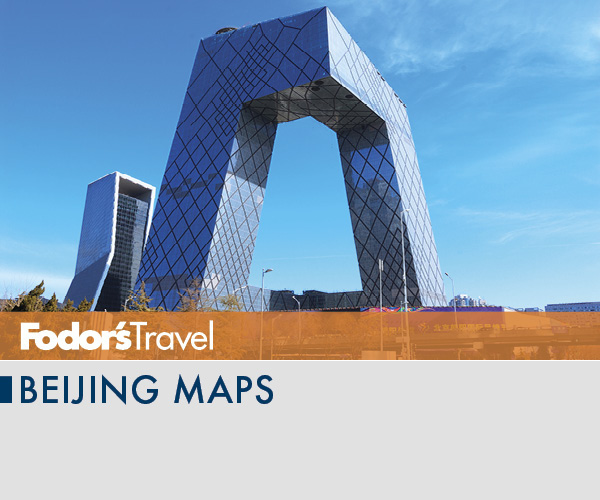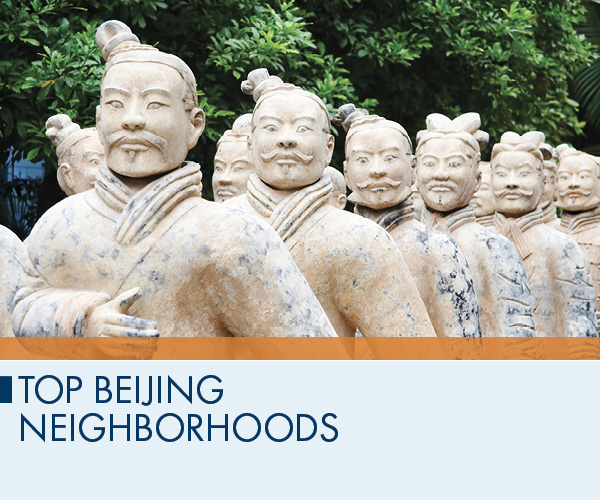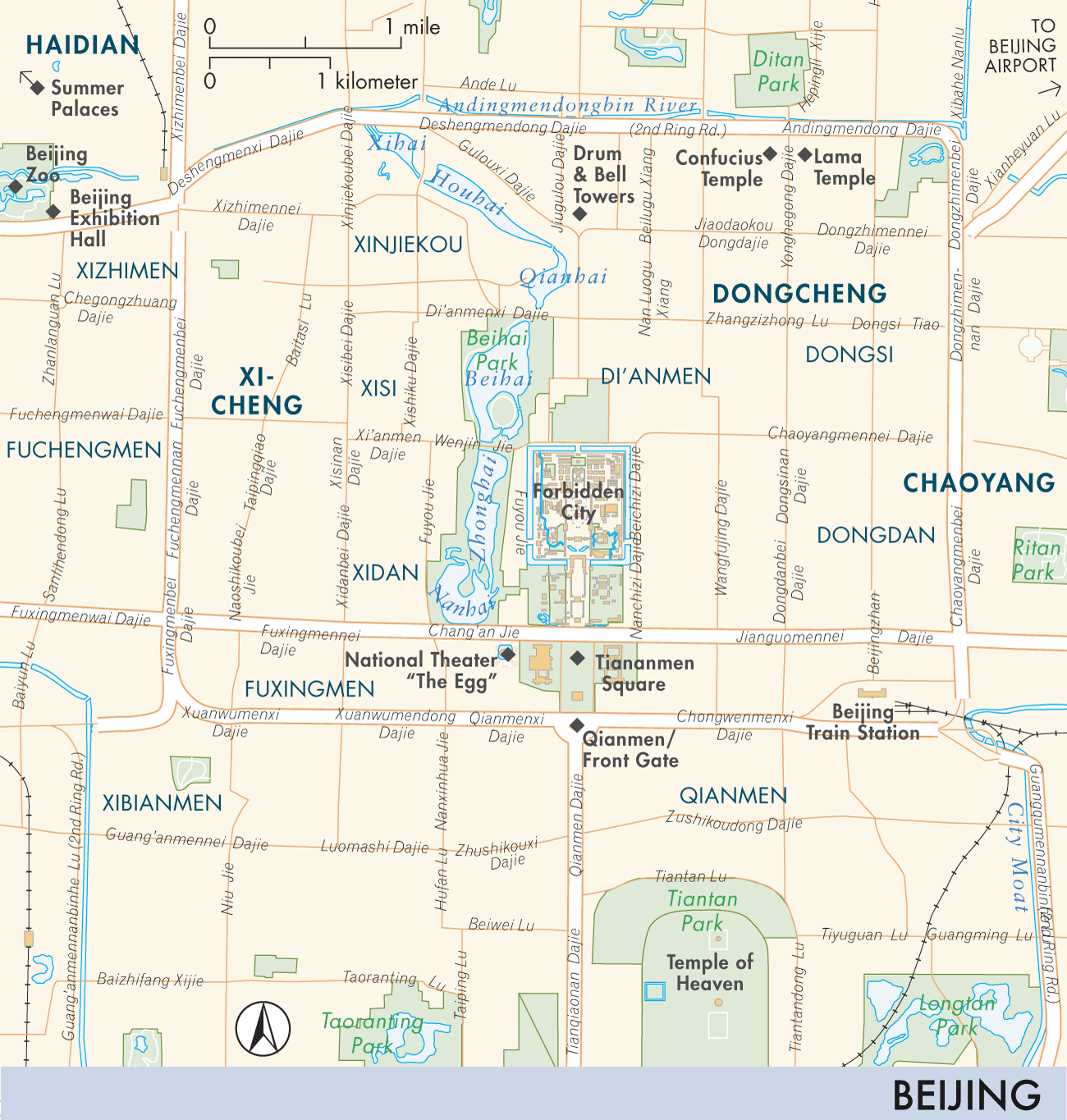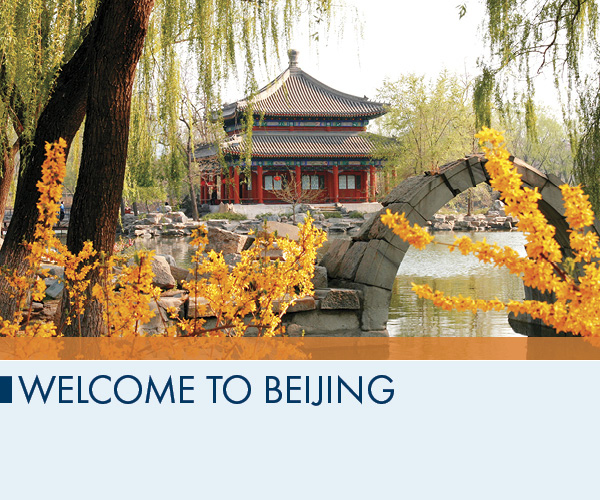Dongcheng District. This is where youll find the citys top must-see attractions, including Tiananmen Square and the Forbidden City, the Buddhist grandeur of the Lama Temple, and the hutong (alleyway) neighborhoods that surround the Drum and Bell towers. Since 2010 the district has also included Chongwen, southeast of the imperial palace. Once upon a time, this area teemed with the activity of markets, gambling parlors, and less savory establishments. A historically accurate (but sanitized) re-creation of old Qianmen Street recaptures some of that lost glory, although it can feel stale and lifeless. The Temple of Heaven features some of Chinas most impressive imperial-era architecture.
Xicheng District. With Dongcheng, Xicheng encompasses the historically significant areas of Beijing that once lay inside the city walls; together the two make up the capitals old inner core with the Forbidden City, home to the ruling imperial family, at its center. Six small lakes west of that key landmark lie at the heart of the district, which was once an imperial playground and is now home to Chinas top leaders. Farther west, fashionable young Beijingers spend their hard-earned cash in the side-by-side shopping malls at Xidan. Tea lovers wont want to miss Maliandao Tea Street.
Chaoyang District. This district wraps around many of the areas forming new Beijing. The skyline-altering Central Business District is in the south, the nightlife of Sanlitun is in the middle, and the 798 Art District (aka Dashanzi) and Olympic Park are in the north. This is todays China, with lots of flash and little connection to the countrys 5,000 years of history.
Haidian District. The nations brightest minds study at prestigious Tsinghua and Peking universities in Beijings northwestern Haidian District. Chinas own budding Silicon Valley, Zhongguancun, is also here. Head for one of the former imperial retreats at the Summer Palace, Fragrant Hills Park, or the Beijing Botanical Garden for some fresh air.
Side Trips from Beijing. No visit to the Beijing area is complete without a side trip to the Great Wall, that ancient defensive perimeter thats just 75 km (47 miles) to the north. Those who have time for a longer excursion could also head to the old imperial retreat of Chengde, now a vibrant city 230 km (143 miles) to the northeast.
When to Go
The best time to visit Beijing is spring or early fall; the weather is better and crowds are a bit thinner. Book at least one month in advance during these times of year. In winter Beijings Forbidden City and Summer Palace can look fantastical and majestic, especially when their traditional tiled roofs are covered with a light dusting of snow and there are few tourists.
The weather in Beijing is at its best in September and October, with a good chance of sunny days and mild temperatures. Winters are very cold, but it seldom snows. Some restaurants may be poorly heated, so bring a warm sweater. Late April through June is lovely. In July the days are hot and excruciatingly humid with a good chance of rain. Spring is also the time of year for Beijings famous dust storms. Pollution is an issue year-round but particularly in winter months.
Avoid travel during Chinese New Year and National Day. Millions of Chinese travel during these weeks, making it difficult to book hotels, tours, and transportation. If you must visit during Chinese New Year, be sure to check out the traditional temple fairs that take place at religious sites around the city.
Getting Around
On Foot: Although traffic and modernization have put a bit of a cramp in Beijings walking style, meandering on foot remains one of the best ways to experience the capitalespecially the old hutong neighborhoods.
By Bike: Some 1,000 new automobiles take to the streets of the capital every day, bringing the total to more than 5 million vehicles. All this competition has made biking less pleasant and more dangerous. Fortunately, most streets have wide, well-defined bike lanes often separated from other traffic by an island. Bikes can be rented at many hotels and next to some subway stations. (And the local government has said it will reduce the number of new license plates by 40 percent by 2017).
By Subway: The subway is the best way to avoid Beijings frequent traffic jams. With the opening of new lines, Beijings subway service is increasingly convenient. The metropolitan area is currently served by 14 lines as well as an express line to the airport. The subway runs from about 5 am to midnight daily, depending on the station. Fares are Y2 per ride for any distance and transfers are free. Stations are marked in both Chinese and English, and stops are also announced in both languages. Subways are best avoided during rush hours, when severe overcrowding is unavoidable.
By Taxi: The taxi experience in Beijing has improved significantly as the citys taxi companies gradually shift to cleaner, more comfortable new cars. In the daytime, flag-fall for taxis is Y13 for the first 3 km (2 miles) and Y2 per km thereafter. The rate rises to Y3 per km on trips over 15 km (8 miles) and after 11 pm, when the flag-fall also increases to Y14. At present, theres also a Y1 gas surcharge for any rides exceeding 3 km (2 miles). WARNING: Be sure to check that the meter has been engaged to avoid fare negotiations at your destination. Taxis are easy to hail during the day, but can be difficult during evening rush hour, especially when its raining. If youre having difficulty, go to the closest hotel and wait in line there. Few taxi drivers speak English, so ask your hotel concierge to write down your destination in Chinese.



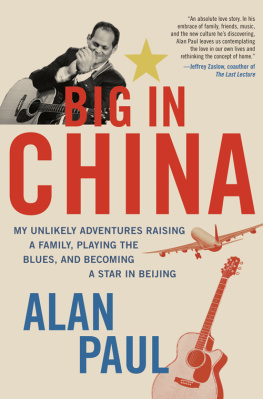
![Martin Zatko - The Rough guide to Beijing [2014]](/uploads/posts/book/218133/thumbs/martin-zatko-the-rough-guide-to-beijing-2014.jpg)
